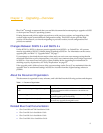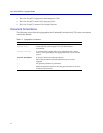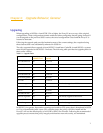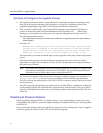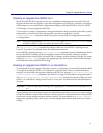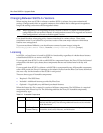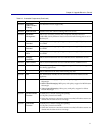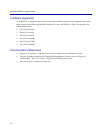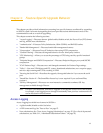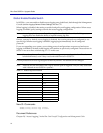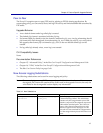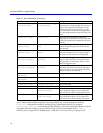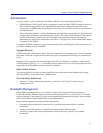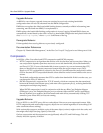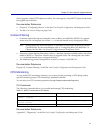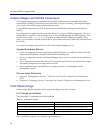
13
Chapter 3: Feature-Specific Upgrade Behavior
This chapter provides critical information concerning how specific features are affected by upgrading
to SGOS 4.x (and if relevant downgrading from) and provides actions administrators must or are
recommended to take as a result of upgrading.
This chapter contains the following sections:.
• "Access Logging"—Discusses the new global enable/disable switch, the Peer-to-Peer (P2P) format
and log, and the new substitutions.
• "Authentication"—Discusses Policy Substitution, Oblix COREid, and RADIUS realms.
• "Bandwidth Management"—Discusses bandwidth management features.
• "Compression" —Discusses ProxySG behavior when using HTTP compression.
• "Content Filtering"—Discusses downgrade behavior for new third-party vendors.
• "CPU Monitoring"—Allows you to see the percentage of CPU being used by specific functional
groups.
• "Endpoint Mapper and SOCKS Compression"—Discusses Endpoint Mapper proxy and SOCKS
compression.
• "ICAP Patience Page"—Discusses new and changed commands for Patience Page settings.
• "Policy"—Lists new VPM objects and CPL syntax, abandoned substitutions, new exception pages,
and new object naming and UTF-8 encoding in VPM.
• "Securing the Serial Port"—Describes the upgrade/downgrade behavior if you secure the serial
port.
• "SmartFilter Version 4"—The SmartFilter license key is now required if you use SmartFilter,
version 4.
• "SSL Key Management"—Discusses new non-interactive commands to enhance SSL key
management available through Director.
Note: If a topic is not discussed, it means no upgrade or downgrade issues exist for that feature:
for example, event logging has no changed functionality from previous versions and will
not be discussed in this document.
Access Logging
Access Logging has added new features in SGOS 4.x:
• A global enable/disable switch: See below.
• A P2P format and log: See "Peer-to-Peer" on page 15.
• New substitutions: See "New Access Logging Substitutions" on page 15. (For a list of deprecated
substitutions, see Table 3.11, “Abandoned Substitution Tokens” on page 25.)



